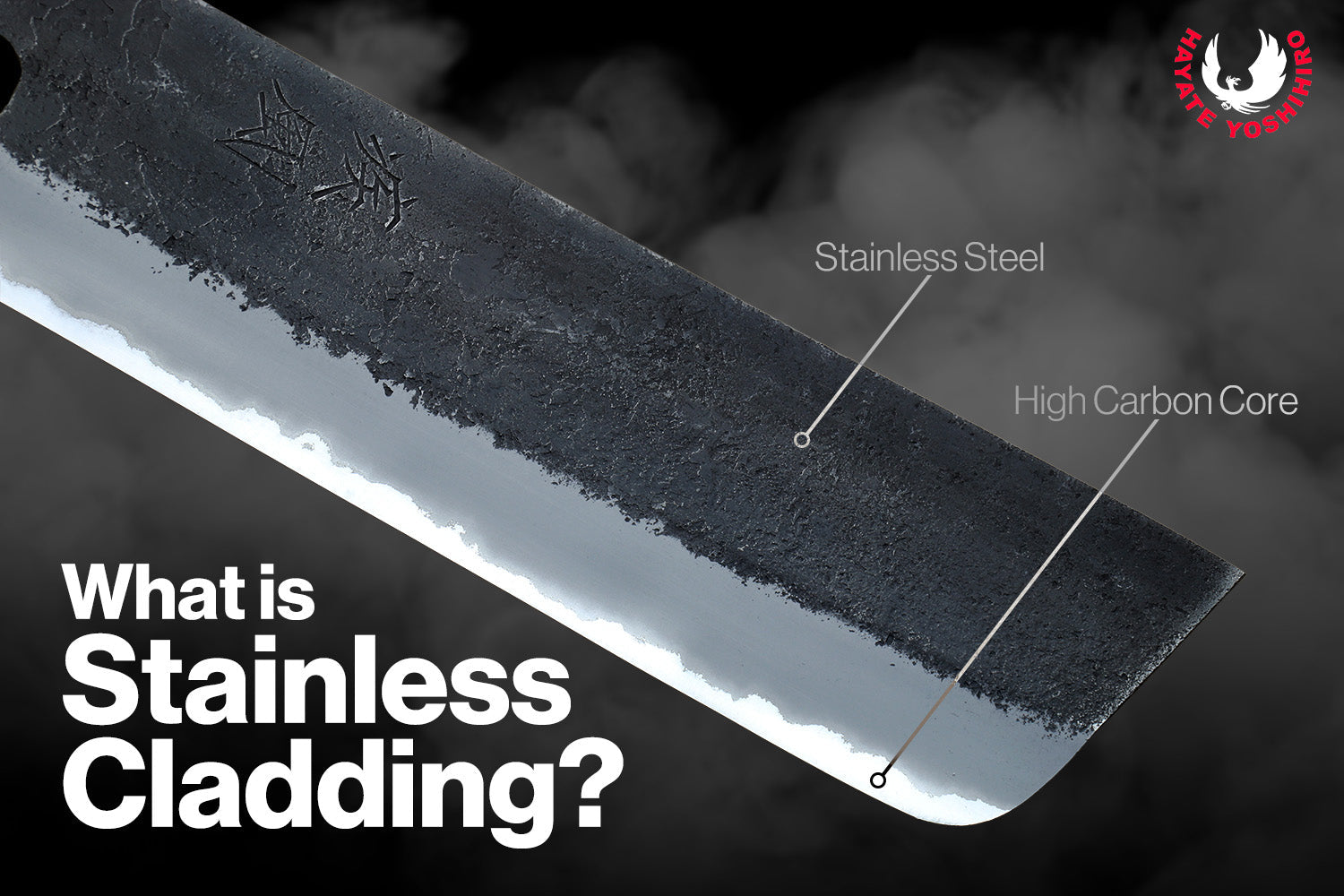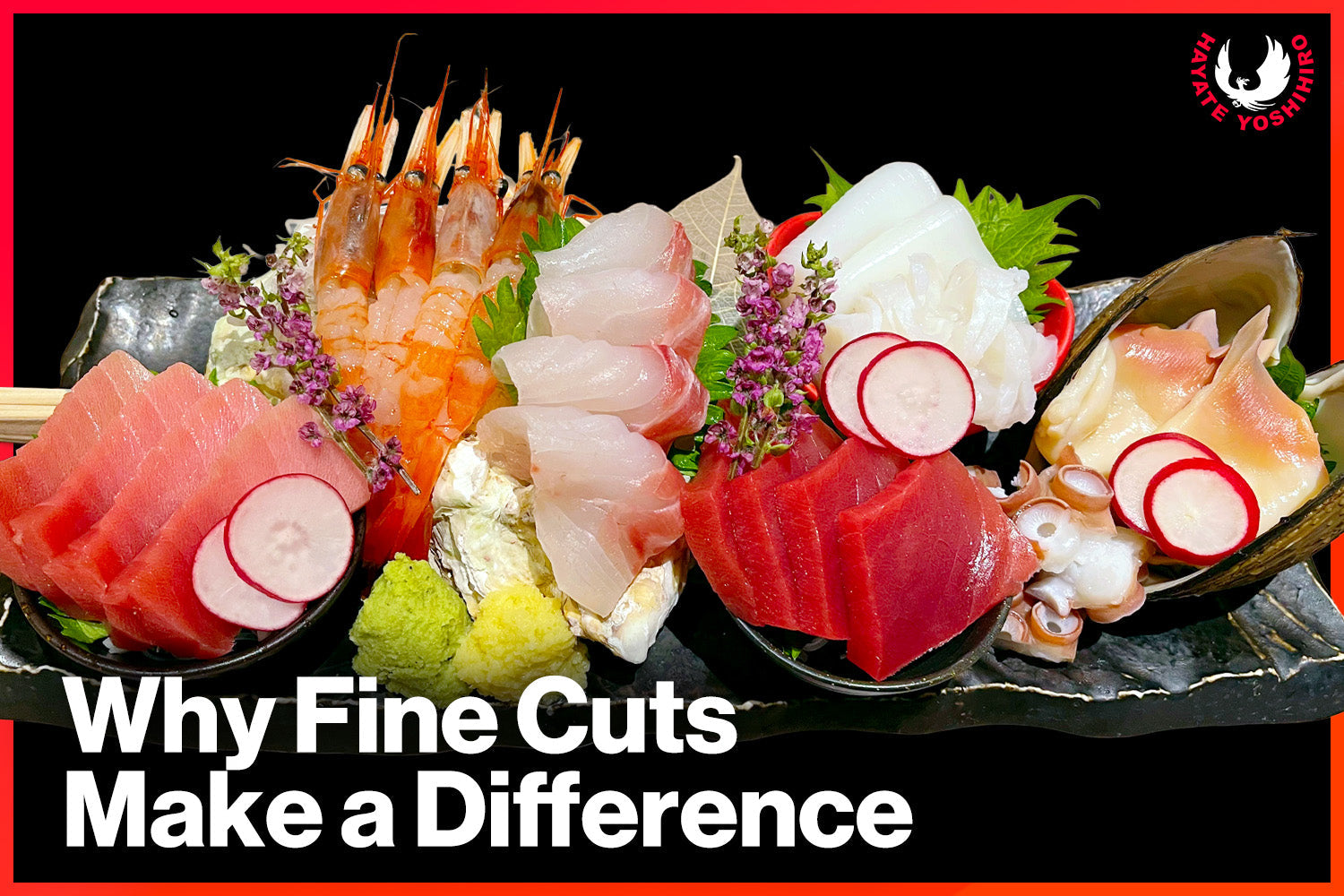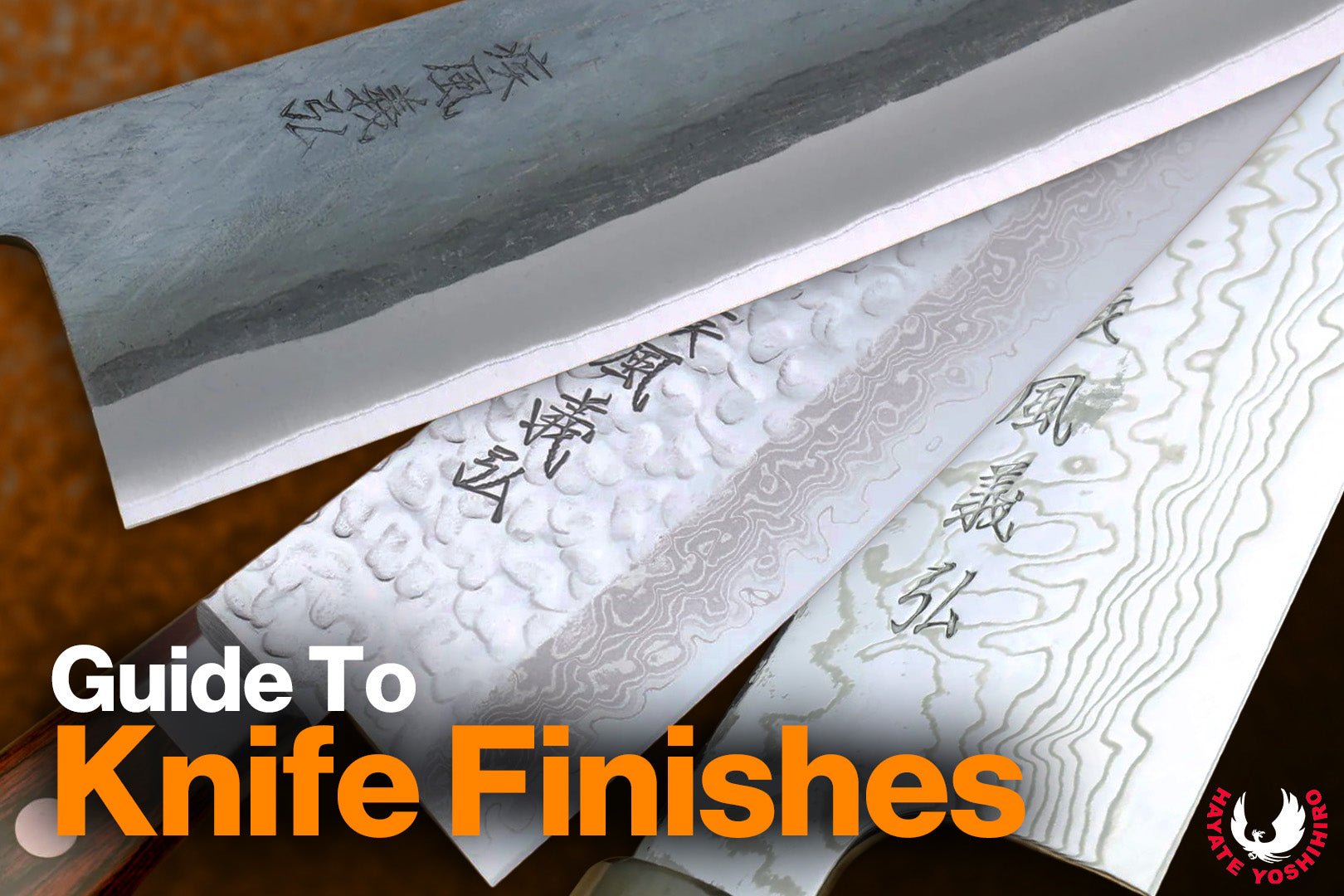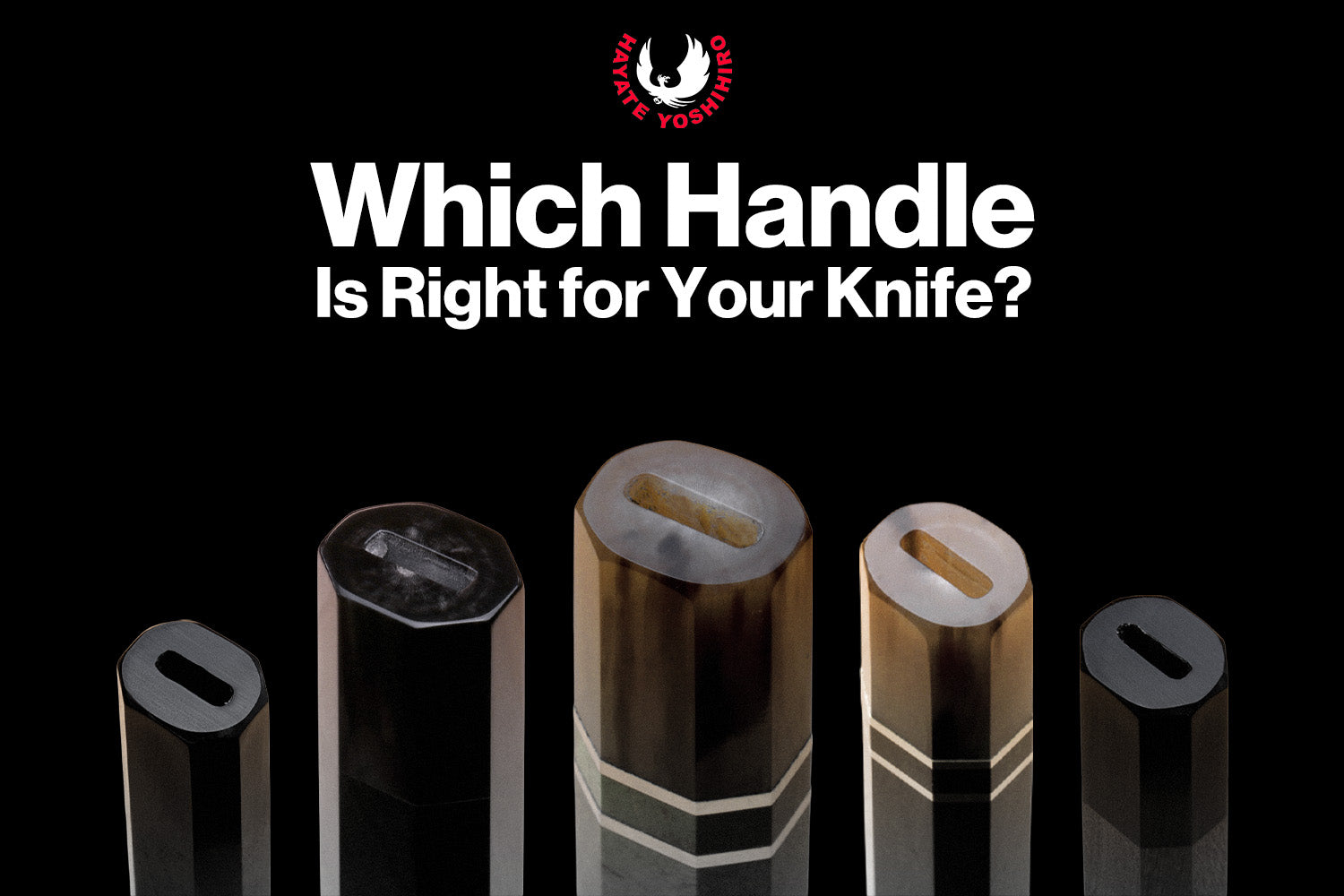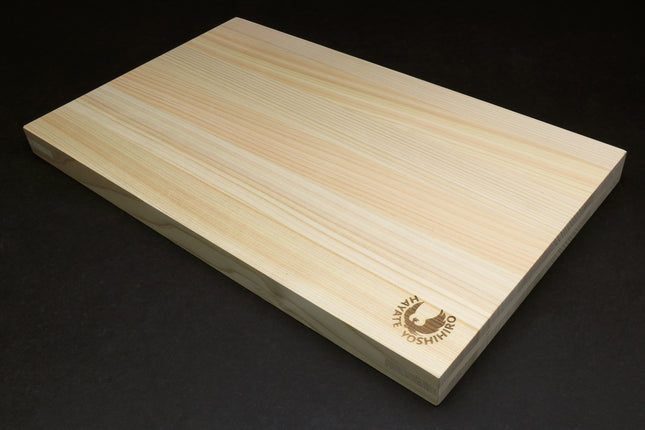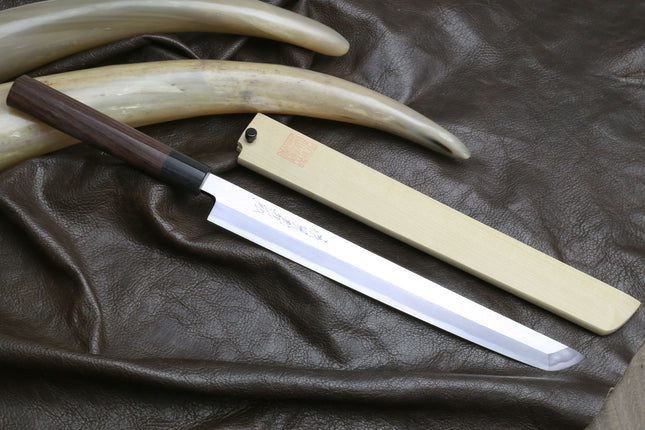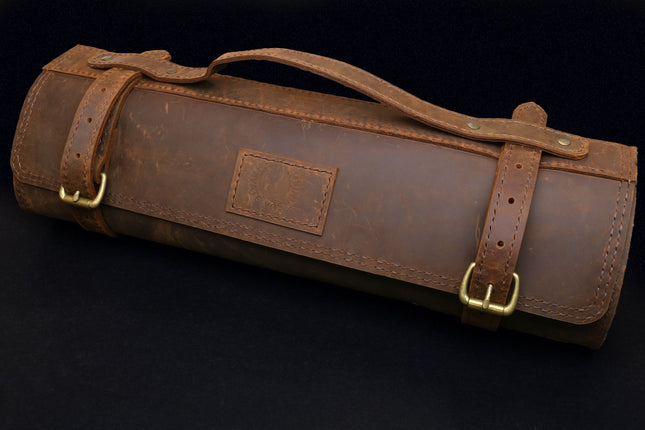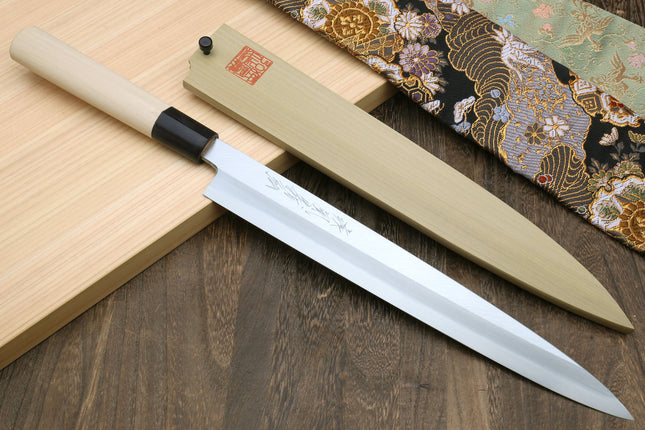The Anatomy of the Japanese Single-Bevel Knife
- by Yoshihiro Cutlery
- 4 min reading time

Understanding Single-Bevel Japanese Knives
Traditionally, Japanese knives were designed with a single bevel, a distinctive grind featuring three key parts: the shinogi surface, the urasuki, and the uraoshi. This method remained dominant until the late 19th and early 20th centuries, when Western influences led to the widespread adoption of double-beveled knives. Despite this shift, Japan continues to produce exquisitely crafted single-bevel knives that offer unmatched precision. Below, we’ll explore the anatomy of a single-bevel blade and how each part contributes to its performance.
What Is a Single-Bevel Knife?
A single-bevel knife has a blade that is beveled on only one side, while the other side remains flat. This asymmetrical design creates a sharper edge compared to double-beveled knives, making single-bevel blades ideal for precision work, particularly in traditional Japanese cuisine like sushi and sashimi preparation. The sharp angle (typically between 15–17 degrees) allows for wafer-thin, unbroken slices with minimal resistance.
While single-bevel knives are theoretically easier to sharpen (since only one side needs honing), they require more skill and care to maintain. Proper sharpening technique is essential—mistakes can affect the blade’s geometry and reduce its cutting effectiveness.
Many high-quality single-bevel knives are handmade, and minor imperfections in shape are common. These imperfections are signs of authentic craftsmanship and do not impact the knife's functionality.

Single-Bevel Grind Terms and Definitions
Here are the essential terms used to describe the components of a single-bevel knife:
- Shinogi Surface: The flat surface on the beveled side of the blade that leads to the edge.
- Urasuki: The concave surface on the flat side of the blade.
- Uraoshi: The thin, flat rim surrounding the urasuki that reinforces the blade’s edge.

Single-Bevel Knife Design and Functionality
Japanese knives are a blend of artistry and precision. From slicing sashimi to chopping vegetables, single-bevel blades are designed for superior performance. Let’s take a closer look at how each part of the blade contributes to its functionality.
Shinogi Surface
The shinogi surface is the flat grind on the front side of the blade, tapering down to the cutting edge. This geometry allows for a narrow angle, which results in an extremely sharp edge. Adding a second bevel (making the knife double-edged) would compromise that sharpness. The shinogi is essential for achieving ultra-fine slicing with minimal resistance.

Urasuki
The urasuki is the concave surface on the flat side of the blade. This design reduces drag while cutting, preventing food from sticking and resulting in cleaner, smoother cuts. It’s especially useful for delicate ingredients like sashimi or vegetables. Additionally, the concave shape minimizes contact with the whetstone during sharpening, helping maintain the blade’s geometry and reducing friction.
Uraoshi
The uraoshi is the thin, flat rim surrounding the urasuki. This rim adds durability to the blade’s edge by reinforcing the surrounding steel. It also plays a key role in sharpening, as it is the part of the blade that contacts the whetstone. Maintaining the uraoshi's flatness is essential to preserving the knife’s geometry and ensuring a consistent edge.

Why Single-Bevel Knives Matter
Understanding the unique structure of a single-bevel knife isn’t just for chefs or knife enthusiasts—it’s for anyone who values precision, tradition, and craftsmanship in the kitchen. These blades represent centuries of Japanese culinary heritage and continue to be the tools of choice for professionals who demand the highest level of control.
Whether you’re preparing sashimi, crafting intricate garnishes, or simply want to elevate your cooking experience, mastering a single-bevel knife offers a deeper connection to the art of Japanese cuisine. It’s more than just a blade—it’s a reflection of technique, care, and culture.
By understanding the anatomy and purpose of each component—from the shinogi surface to the uraoshi—you’ll not only get the most out of your knife, but also ensure it lasts for generations to come.
Frequently Asked Questions
Are single-bevel knives better than double-bevel?
Single-bevel knives are sharper and allow for more precise, cleaner cuts, but require more skill to use and maintain. Double-bevel knives are more versatile and easier for general use.
Can I use a single-bevel knife if I’m left-handed?
Most single-bevel knives are made for right-handed users. However, some left-handed versions are available from premium makers like Yoshihiro Cutlery.
What foods are best suited for single-bevel knives?
They excel at delicate slicing tasks like sashimi, sushi, garnishes, and vegetable prep that require high precision.
Featured Products
Share information and details about this collection


